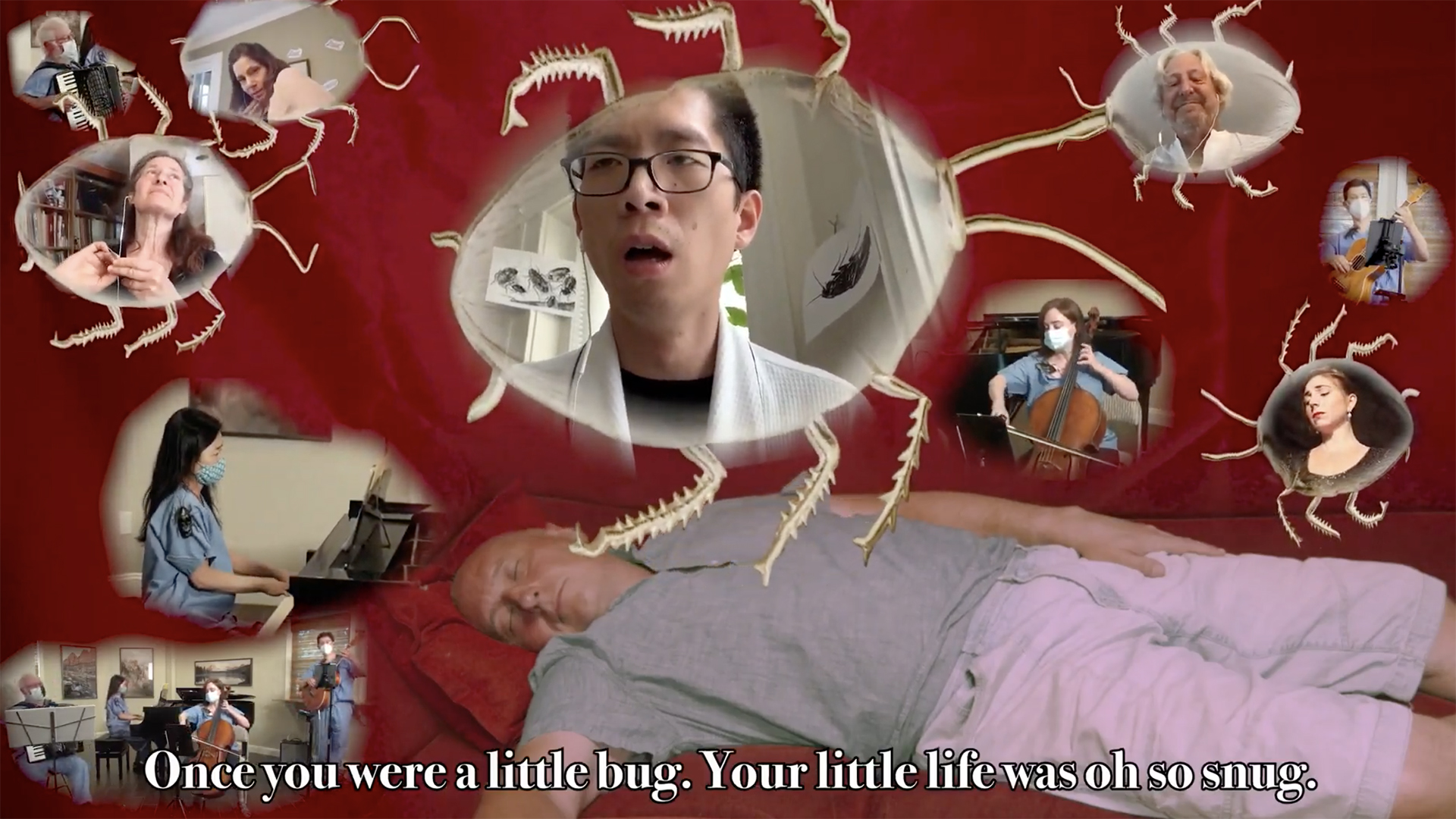Helium-huffing alligators and reluctant hitmen win big at the Ig Nobel awards
As always, weird science took center stage.

What do alligators on helium have in common with frozen poop knives, hitmen who won't do their jobs and earthworms that vibrate at high frequencies? These peculiar topics all inspired research that earned a unique science accolade: a 2020 Ig Nobel Prize.
The Ig Nobel Prize ceremony is an annual event to honor weird science in a diverse range of disciplines. The awards are organized by the magazine Annals of Improbable Research (AIR) and co-sponsored by the Harvard-Radcliffe Society of Physics Students and the Harvard-Radcliffe Science Fiction Association, and it's definitely an evening to remember. Each year, winners are handed their trophies (along with a 10-trillion dollar bill from Zimbabwe) by Nobel laureates; professional singers trill an original mini-opera; and audience members gleefully fling paper airplanes at the stage, in a celebration of scientific achievements "that make people laugh, then think," according to the contest website.
Now in its 30th year, the Ig Nobels usually take place at Harvard University's Sanders Theatre in Cambridge, Massachusetts. But for the 2020 presentation, the organizers had to get even more creative than usual; due to the COVID-19 pandemic, the ceremony was prerecorded and debuted online yesterday (Sept. 17).
Related: In photos: The science and silliness of the 2017 Ig Nobels
One big winner was research on bellowing alligators that huffed helium for science. Scientists enclosed a female Chinese alligator (Alligator sinensis) in a chamber, then pumped in a mixture of helium and oxygen and measured acoustic changes in her bellows, to see if they could detect resonances in alligator vocals that were similar to human speech; their experiments earned them an Ig Nobel in Acoustics.
Other winners included a team that generated waves in the liquid-filled bodies of live (anesthetized) earthworms through high-frequency vibrations, to see how that would affect the shape of their bodies (Ig Nobel in Physics); researchers who found that narcissistic personality traits could be revealed by a person's eyebrows (Ig Nobel in Psychology); and scientists who identified diagnostic criteria for a psychiatric disorder that causes stress and aggression in response to the sounds of loud chewing (Ig Nobel in Medicine).
"We just want to dedicate this award to everyone who's done data-driven research and found themselves somewhere they never expected," said Nick Rule, one of the co-winners of the Psychology prize and a psychology professor and associate chair of the Department of Psychology at the University of Toronto.
Get the world’s most fascinating discoveries delivered straight to your inbox.
A special Ig Nobel in Management went to a group of "reluctant hitmen" in China; a would-be assassin, rather than doing the job he was hired to do, subcontracted another assassin to do it for him, for a lower price. The subcontractor then hired another hitman, who then hired yet another; eventually, the fee was so low that the sixth hitman in the line decided to talk the victim into faking his own death. The failed hitmen, who were sentenced in 2019 for intentional homicide, were unavailable to collect their prize.
Participants spanned six continents, yet Ig Nobel laureate presenters still handed them their prizes from their own homes, master of ceremonies and AIR co-founder and editor Marc Abrahams told Live Science.
"We figured out a way to do that which seemed to be pretty satisfying to everybody concerned — and was certainly goofy," he said. (The "handoff" of prizes took place on Zoom, and was mostly successful).
"And then there's the opera, which is a pretty complex undertaking anyway. But when you can't have all the people in the same room, and most of them can't leave their homes — how do you coordinate that? People did a lot of clever stuff," Abrahams said.
Related: The 10 weirdest medical cases in the animal kingdom
A buggy event
Every year, the Ig Nobels present a theme (which does not necessarily reflect the prizewinning research topics) and this year's was "bugs." The prizes, emailed to presenters and winners as PDFs for assembly at home, were six-sided paper cubes; five sides were decorated with different kinds of bugs: a flea, a cockroach, a computer bug, a norovirus stomach "bug", and a Volkswagen Beetle.
But why bugs?
"You always want something that's well-known to everybody, and "bugs" is pretty universal," Abrahams said.
Bugs were certainly important to the winner of the Ig Nobel Prize for Entomology. Richard Vetter, a retired staff research associate in the Department of Entomology at the University of California, Riverside, described the unusual predicament of entomologists who were afraid of spiders, and were unable to overcome their negative feelings despite decades of work with other small arthropods — insects.
"For these people, two more legs makes a big difference," Vettner wrote.
During the streaming ceremony, bugs also appeared in animated sequences; as wearable accessories on presenters and musicians; and in several of the evening's 24/7 Lectures, in which scientists summed up their research — first in 24 seconds, then in seven words.
"Insects: You'll be sorry when they're gone," lectured May Berenbaum, a professor and head of the Entomology Department at the School of Integrative Biology in the University of Illinois at Urbana-Champaign.
Early adaptors
While this is the first year that the Ig Nobel ceremony was not streamed from the Sanders Theatre, the event has been presented live online since 1995, Abrahams said.
"We were worried about too many people trying to get into the building, and we wanted to send a television signal to a lecture hall in Harvard," Abrahams explained. As it turned out, the building wasn't wired for TV broadcast — but it could connect to the internet.
"A grad student there said: 'Hey, stick the signal on the internet and send it across the street,'" Abrahams said. "And as long as we're doing that, we can just tell everybody on the internet, and then everybody can watch!"
The 2020 ceremony is available in its entirety on Live Science and on YouTube. You can find the full list of the 2020 Ig Nobel Prize winners on AIR's website.
Originally published on Live Science.

Mindy Weisberger is a science journalist and author of "Rise of the Zombie Bugs: The Surprising Science of Parasitic Mind-Control" (Hopkins Press). She formerly edited for Scholastic and was a channel editor and senior writer for Live Science. She has reported on general science, covering climate change, paleontology, biology and space. Mindy studied film at Columbia University; prior to LS, she produced, wrote and directed media for the American Museum of Natural History in NYC. Her videos about dinosaurs, astrophysics, biodiversity and evolution appear in museums and science centers worldwide, earning awards such as the CINE Golden Eagle and the Communicator Award of Excellence. Her writing has also appeared in Scientific American, The Washington Post, How It Works Magazine and CNN.




